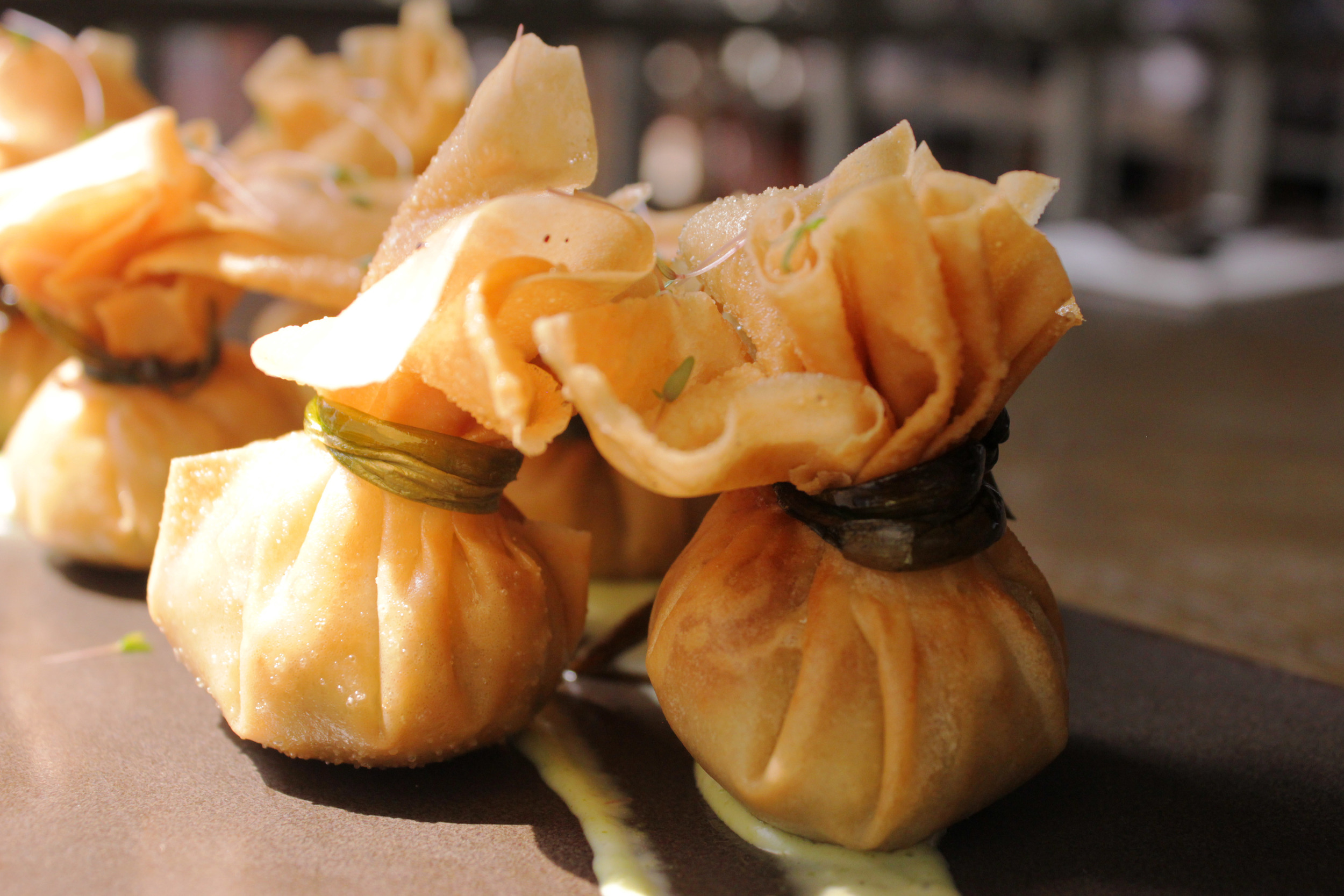THERE ISN'T A PALETTE MORE DIVERSE THAN AN INDIAN ONE. AND YOU'D BE HARD PRESSED TO FIND THAT KIND OF VARIETY FROM JUST A SINGLE SECTION OF THE COUNTRY ANYWHERE ELSE.
Wait for it...
One of the earnest ideas behind The Permit Room is to introduce people to the sheer variety of traditional South Indian cuisine, but with a modern-day take on it. Essentially it's recipes from your ajji's (Kannada for grandma) kitchen, but served in a rather modern, and also cocktail-friendly form. Your ajji may or may not approve.
Thindi Tales is an attempt to take you one step deeper, the equivalent of getting you to eat meals with your fingers, and hopefully help you appreciate south-indian cuisine in all its gastronomic glory.
If you’re from Bangalore and a lover of all things rice, chances are you’re more than familiar with this dish. While biryani itself has a long and glorious history, the Donne Biryani is special to namma ooru.
The Dish
We’ve kept it pretty true to the classic, and added a little delight via detail.
Ufff. Just look at it.
There’s the biryani, the gorgeous cuts of lamb, the sides, and did we mention the mouth-watering cuts of lamb? We did? That’s ok. It’s worth mentioning twice.
Pretty much everyone (with any decent taste in food) knows what biryani is.
But what exactly is a ‘donne’?
A Little History
‘Donne’, (pronounced dhoe-nae, like watch me whip/watch me naenae, but with some stress on the ’n’ like ‘nuhhhh’), is nothing but big, huge cups or bowls made from the Areca Palm leaf.
That’s pretty much where the name for the dish comes from. And while the style of the biryani is slightly different too, that’s an inside secret we aren't at liberty to share.
Also, eco warriors will agree that the best part about traditional recipes and dishes is that our ancestors always found some way to keep it real with nature. That’s why, apart from biryani consuming purposes, these kind of bowls and plates are making a comeback because of their eco-friendly disposable abilities.
At The Permit Room
We’ve modelled our version around the Military Hotel style of biryani. Which basically means a no-nonsense, fully-focused-on-the-food-without-any-frills kind of biryani. We highly recommend you stop by one of the many military hotels that line the highways of Karnataka at some point in your lives. And if that's too far, you just come off here.
The Donne Biryani comprises of some perfectly succulent pieces of lamb steeped in all the earthy flavours associated with this dish. We serve it hot off the fire, in a bowl made from Areca leaf, which really lends to the rustic nature of this dish. And on the side, we have some raita, fried onions, crackers, and a whole lot of love. (Sorry, but biryani makes a romantic mess out of us!)
Our Chef Says
“We had a lot of fun creating this dish. It’s got all the Donne Biryani trademark features in it, with a little bit of our signature stylings too. We decided to add some standard sides that complement the biryani. They’re pretty traditional as far as biryani is concerned, but also subtle enough to not take away from the main flavour in focus."




























